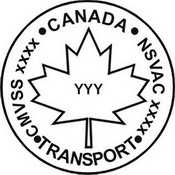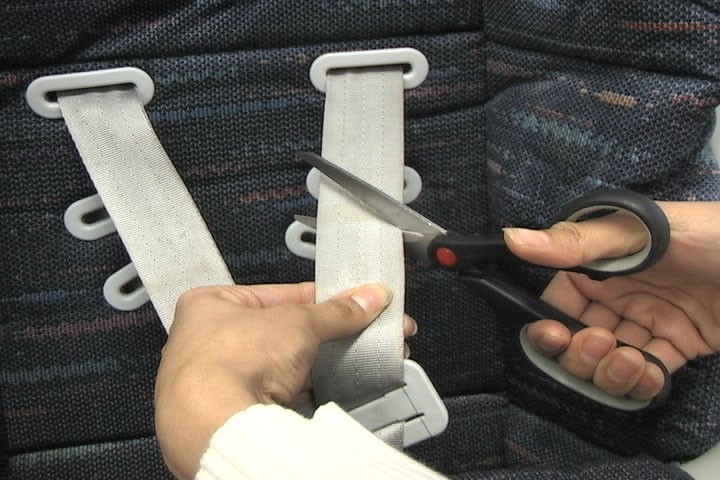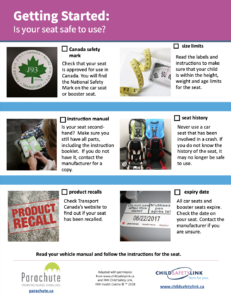A previously used seat may be safe to use for your child if you know the history of the seat. But if you do not know the seat’s history – for instance, whether or not it has been in a collision – it may no longer be safe to use.
A previously used seat can be a safe and appropriate option for your family. Consider the following factors:

- Is there a label with the date of manufacture, model name and model number?
- Do you have a copy of the instruction manual for this seat? If not, contact the manufacturer for a copy.
- Is the seat expired? All car seats and booster seats expire. Contact the manufacturer if you are unsure. Do not use a seat past its expiry date.
- Has the car seat been recalled? Check on the Transport Canada website for recalls.
- Has the car seat ever been in a crash, even a minor one? If so, it may no longer offer the same protection in a second crash, even if it looks undamaged.

If the seat is no longer safe to use, cut the straps, remove the cover and, where possible, place it on the curb in a black garbage bag. This damage will ensure the seat is not taken from the garbage and mistaken for a safe seat.
